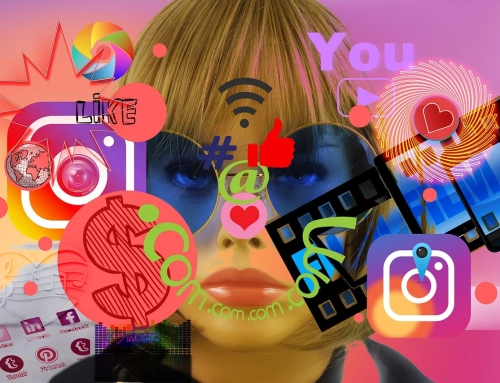Recently, India’s social media landscape has seen a profound upheaval, characterised by the exponential rise of influencers. These digital content builders have not only changed our information consumption patterns, but have also emerged as powerful influencers, shaping trends, attitudes, and consumer decisions. Their spectacular rise indicates an abrupt change in how people interact with online information, emphasising the powerful role influencers play in moulding the nation’s socio-cultural and consumer environment. This transition highlights the fluid character of modern communication, where influencers hold extraordinary power in shaping the path of digital conversation.
As we delve into the dynamic world of social media influencers in India, let’s explore the top trends and possibilities.
Latest Trends and Possibilities
Diversification Across Platforms:
Influencers increasingly transcend platform boundaries, demonstrating a mastery of the vast social media universe. They expand their impact beyond traditional fields like Instagram, YouTube, and Twitter to emergent platforms such as Clubhouse and TikTok. This smart multi-platform strategy not only broadens their reach but also allows influencers to engage with a variety of audiences. They accept a range of content formats and adapt smoothly to the changing digital scene, highlighting the agility necessary to flourish in this dynamic era of social media impact.
The Era of Niche Influencers:
The era of generic content has given way to a new model in which specialist influencers are becoming increasingly important. These influencers, who are focused on certain hobbies or groups, provide a personalised and specialised approach. Brands that recognize the value of focused engagement are increasingly forging partnerships with these specialised influencers. This strategic partnership enables businesses to develop a more intimate relationship with their target audience, recognizing that personalised and authentic content resonates more powerfully in an environment where individuality and relevance are important.
Strategic Brand Collaborations:
A wave of change is taking place as corporations recognize the power of influencer marketing as a powerful promotional tool. Collaborations between influencers and marketers are on the rise, with influencers serving as genuine advocates for products and services. This game-changing trend not only increases brand visibility but also reshapes traditional advertising tactics. The true relationship that influencers develop with their audiences is crucial, bringing in an era in which authenticity and relatability change the dynamics between businesses and consumers in the ever-changing environment of digital marketing.
Micro-Influencers Making a Macro Impact:
The micro-influencer idea is gaining significant traction in the influencer scene. Despite having fewer followers, some influencers have significant power owing to their highly engaged and passionately dedicated fanbase. Brands are quickly realising the value of these micro-influencers since their authenticity and relatability can result in more impactful marketing. In contrast to macro-influencers, the close connection micro-influencers cultivate with their audience is crucial, providing marketers with a sophisticated and successful method to engage consumers in a landscape driven by real relationships and trust.
Video Content Dominance:
The increasing popularity of visual content, particularly video content, continues as influencers use platforms like YouTube and Instagram Reels to create attractive and shareable content. Short-form videos have developed as a dominant force, with influencers adeptly capturing viewers through visual narrative. This preference for dynamic and immersive content represents a paradigm change in audience interaction, with visual tales’ immediacy and richness becoming the preferred way for influencers to develop and strengthen connections with their viewers.
Navigating Regulatory Measures:
The expectation of regulatory actions becomes more obvious as the power of social media influencers grows. Stakeholders in the industry anticipate the establishment of standards requiring full disclosure of sponsored content and ethical practices in influencer marketing. This insight suggests a collaborative effort to create a fair and trustworthy digital ecosystem. In the developing realm of digital influence, such regulations strive to promote transparency, minimise fraudulent practises, and create a climate in which influencers, corporations, and viewers may engage in a mutually beneficial relationship based on credibility and authenticity.
Educational Content for the Win:
A remarkable shift is taking place as influencers transcend their traditional duties and take on the role of instructors. Influencers are actively sharing their expertise and abilities in this process, catering to an audience hungry for constant learning. Influencers are capitalising on the increased demand for educational material, offering everything from skill development lessons to fully online courses. This connection with the audience’s desire for continuing learning not only demonstrates influencers’ adaptability, but also demonstrates their dedication to creating important, instructive, and entertaining material that goes beyond traditional entertainment.
Regional Influencers Redefining Representation:
Once restricted to metropolitan hubs, the influencer tsunami is now sweeping beyond tier-2 and tier-3 cities. It is bringing influencers from varied locations to prominence. This departure from the urban-centric trend allows for a more inclusive portrayal of cultures and languages on social media platforms. These influencers provide authenticity and distinct viewpoints, adding a tapestry of voices to the digital scene. The increase of influencers from smaller locations underscores the democratisation of influence. It is breaking down geographical borders and generating a more culturally varied and representative online environment.
Interactive Engagement:
Passive content consumption is giving way to a dynamic phase in which influencers actively engage their audience. Influencers are encouraging a more involved audience experience by using interactive content forms like polls, quizzes, and live sessions. This strategy move indicates a realisation that audience participation entails more than one-way communication. Influencers not only increase engagement but also foster a sense of community by integrating their followers in real-time exchanges. Moreover, changing the digital environment into an interactive and collaborative platform where audience involvement is essential to the entire experience.
Social Impact and Activism:
Influencers have gone beyond content production to become opinion leaders, using their platforms to address urgent societal issues and advocate worthwhile causes. This trend represents a greater cultural shift towards digital activism, in which influencers use their power to impact good change. Influencers are becoming important voices in moulding public opinion and increasing awareness. Whether they are campaigning for environmental sustainability, social justice, or other essential issues. This shift highlights the transformational power of digital platforms. This is where influencers play a critical role in altering not only trends but also social viewpoints.
Conclusion:
The rise of social media influencers in India is a testament to the transformative power of digital content creation. As top social media influencers in India continue to shape trends and influence consumer behaviour, the landscape will undoubtedly evolve. From diversified platforms to strategic brand collaborations and a focus on education and regional representation, the possibilities are vast. The future promises an even more dynamic and influential social media ecosystem in India.








Leave A Comment